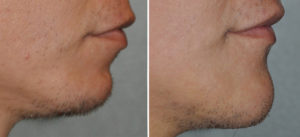While the most common chin augmentation dimension is forward or in the horizontal dimension, the most under diagnosed chin augmentation patient is the one who needs some vertical lengthening as well. Vertically elongating the chin typically means a forward and down direction of augmentation in profile (45 degrees in the side view) and not a true vertical lengthening. (90 degree drop with no horizontal) They are recognized as patients whose lower third of the face is vertically short and violates the facial thirds relationship. Adding a horizontal chin implant improves projection but keeps the lower face compressed and still disproportionate.


Dr. Barry Eppley
Indianapolis, Indiana







